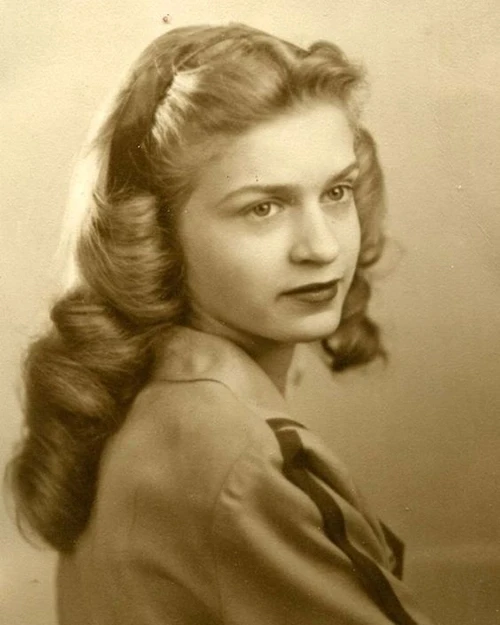Article 5
-
8 mar 2024
-
5 min read
As we celebrate International Women's Day, it's essential to acknowledge the multifaceted journey of women through history. One aspect that stands out is the significance of hairstyling in shaping women's confidence and self-expression. From ancient civilizations to the modern era, women have utilized their hair as a canvas for cultural identity, empowerment, and self-discovery.
Cultural Significance: Beauty, Status & Symbolism.
In ancient civilizations, women across diverse cultures expressed their identity through intricate hairstyling. In Egypt, women adorned their hair with braids and beads, symbolizing social status and spirituality. The elaborate hairstyles of ancient Greek women were not merely fashion statements but reflections of societal roles and traditions. Hairstyles conveyed messages about a woman's marital status, age, and social standing, underlining the intertwining of beauty and cultural significance.
Fast forward to the Renaissance, where elaborate hairstyles became symbolic of wealth, status, and social standing. Women in the European courts adorned themselves with towering wigs and intricate braids, showcasing their prosperity and adherence to societal norms. However, the era also saw rebellious women challenging norms through more natural styles, reflecting the beginning of a shift towards individual expression.

Traditional braids of the Pomak people, Bulgaria
The 20th Century: Liberation and Transformation
The 20th century stands as a pivotal era in the history of women's hairstyling, marked by dynamic changes that mirrored the evolving social landscape.
The roaring '20s, characterized by the aftermath of World War I and the beginning of the women's suffrage movement, saw a seismic shift in societal attitudes towards women. The bob haircut emerged as a symbol of liberation, signaling a rejection of traditional gender norms and a bold stride towards independence. Women were no longer confined to long, conventional hairstyles; instead, they embraced shorter, more practical cuts that mirrored their newfound sense of freedom.

The iconic bob cut from the 20s
Moving into the 1930s and 1940s, the impact of the Great Depression and World War II had profound effects on both society and hairstyling. Economic hardships led to simpler, more subdued hairstyles as women faced practical challenges. Victory rolls and pin curls became popular during the war years, reflecting a sense of resilience and adaptability. These hairstyles not only served functional purposes but also embodied the strength and determination of women during challenging times.

Victory Rolls from the 40s
The post-war era of the 1950s witnessed a return to more polished and feminine styles. The iconic victory rolls evolved into glamorous curls and elaborate updos, reflecting a desire for prosperity and stability in the aftermath of wartime uncertainty. The 1950s also brought forth the iconic poodle cut and the introduction of the beehive, symbolizing the blending of tradition and modernity.

Audrey Hepburn in the 50s
The 1960s, a decade of social upheaval and cultural revolution, saw women breaking away from societal norms. The youth-driven counterculture rejected the conservative values of the previous decade, and women embraced the iconic bob once again. However, this time, it was coupled with more experimental and unconventional styles. The Afro became a powerful symbol of the Black pride movement, challenging Eurocentric beauty standards and asserting a celebration of natural Black hair.

Dianna Ross in the 60s
The 1970s marked a continuation of the free-spirited ethos, with the rise of bohemian and hippie styles. Long, flowing locks and natural textures became synonymous with the era's embrace of individuality and a rejection of societal constraints. In the 1980s, the influence of pop culture and the emergence of punk and new wave movements saw a diverse range of hairstyles, from the bold and edgy to the glamorous and flamboyant.

Japanese magazine from the 70s
The late 20th century witnessed a resurgence of minimalist styles in the 1990s. This era emphasized a more casual and carefree approach to hairstyling, reflecting changing attitudes towards beauty, fashion and self-expression.

Paris Fashion Week in the 90s
Modern Era: Embracing Natural Beauty and Individuality
In the 21st century, the beauty industry is undergoing a revolution as women increasingly embrace their natural textures and styles. From the natural hair movement among Black women to the acceptance of various textures and colors, women are breaking free from societal expectations. The emphasis is on individuality, self-love, and empowerment, as women use hairstyling to express their authentic selves.

New York street style nowadays
Conclusion: Celebrating Women's Empowerment Through Hairstyling
As we commemorate International Women's Day, let's recognize the profound impact that hairstyling has had on women's confidence and self-expression throughout history. From ancient civilizations to the modern era, women have harnessed the power of their hair to tell stories, challenge norms, and celebrate their unique identities. The diversity of hairstyles mirrors the diversity of women's experiences, creating a tapestry of empowerment that continues to evolve. In celebrating women's hairstyling, we honor not just the beauty of the external, but the resilience, strength, and individuality that radiates from within.

